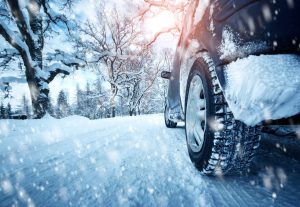

The Different Types of Tire Tread Wear
Tires |Tires are the foundations of every vehicle. If a tire pops, multiple drivers could be at risk. Everyone must know about the different types of tire tread wear to remain safe on the road. It’s even more vital to watch out for these issues since winter is just around the corner.
Center Wear
Center wear is one of the most common types of tire tread wear. Center wear happens when a tire is overinflated, putting too pressure on the wheel. You can fix this problem by performing a visual exam before getting behind the wheel. If the tires look too inflated, let out some air to avoid disaster.
Side Wear
Side wear is the opposite of center wear, meaning the tires don’t have enough air in them. Essentially, the wheels try to make up for the fact that they’re underinflated by putting too much pressure on the tire’s sides. Check your tire pressure before you leave so that nothing happens while you’re on the road.
Flat-Spot Wear
Everyone knows the fear of having to brake at a moment’s notice. Try your best to keep this at a minimum, because it has an adverse effect on your tires. Constantly braking quickly causes flat-spot wear. This means the air throughout your tires is inconsistent. These flat spots make it very challenging to have a smooth drive, and they increase the likelihood of accidents.
Sidewall Wear
Sidewall wear is perhaps the most unique kind of tire tread wear. Side wall wear happens when you park too close to an edge or another vehicle. People who use parking garages are more likely to experience this issue. In addition, it’s why family members shouldn’t park their cars too closely together in the driveway. Everyone should know about the different types of tire tread wear so that they know the warning signs. Any of these problems poses a safety hazard and may lead to the need for replacement altogether. If you’ve let the wear get out of control, visit RNR Tire Express today. We sell some of the best tires in Grand Junction, so we’ll have you back on the street in no time.





